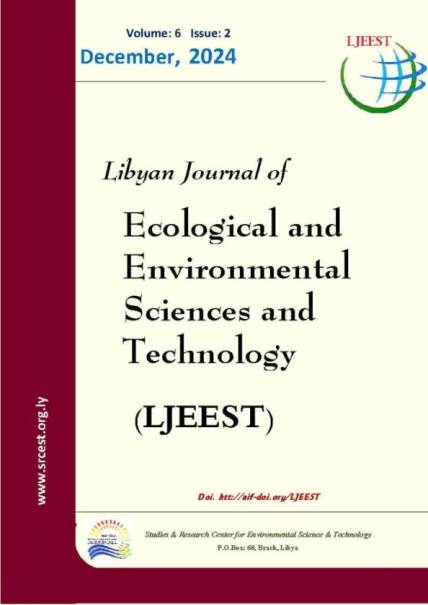Isolation and Diagnosis of Air Fungi Resulting from Microbial Emissions from Garbage Dumps in The City of Al-Bayda, Al-Jabal Al-Akhdar, Libya
DOI:
https://doi.org/10.63359/1527d844Keywords:
Air pollution, microbial activity, glass traps, air fungi, Artemisia L., Germination, Seed preservation, Cicer arietinum, Vigna unguiculataAbstract
The problem of air pollution is considered one of the major problems facing the world, and many people believe that gaseous emissions, dust, and human activities are mainly responsible for air pollution. This field study was conducted at a number of thirteen points distributed among the garbage dumps in the city of Al-Bayda, and the study continued for a period of time that included the seasons of the year. This research aimed to identify fungi resulting from the microbial activity of garbage dumps residing in the atmospheric air by catching them, isolating them, and classifying them according to fungal genera, where glass traps were collected. After distributing it around the landfill at distances of 100, 500, and 1000 meters from the landfill, then these slides were transferred to the fungi laboratory located in the Department of Plant Protection, College of Agriculture, Omar Al-Mukhtar University, and the process of isolating the fungi from the glass slides collected from the landfills was carried out. The results indicated that the number of isolated fungi reached 13 fungal genera, with the largest number of fungal colonies being of fungi. Aspergillus niger, Penicillium spp, Alternaria spp, Rhizopus spp, Mucor spp and Fusarium spp, At rates that reached (11.6, 16.4, 12.9, 9.9, 2.9, and 1.5%), respectively, it was also found that the highest fungal prevalence of fungal colonies of Penicillium spp and Aspergillus niger was during the summer, with rates reaching (68.55 - 66.34%), respectively, and the lowest prevalence was during The winter season was at rates of (4.77 - 2.41%), respectively, and the spread of fungi was present in all sites, as it was found that the extent of the spread of fungi exceeds a range of 1000 meters.
Downloads
Published
Issue
Section
License

This work is licensed under a Creative Commons Attribution-NonCommercial 4.0 International License.














